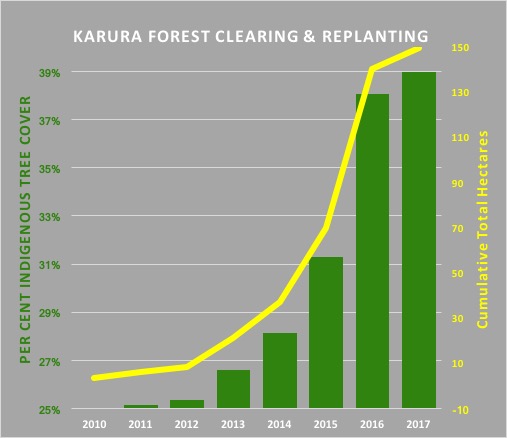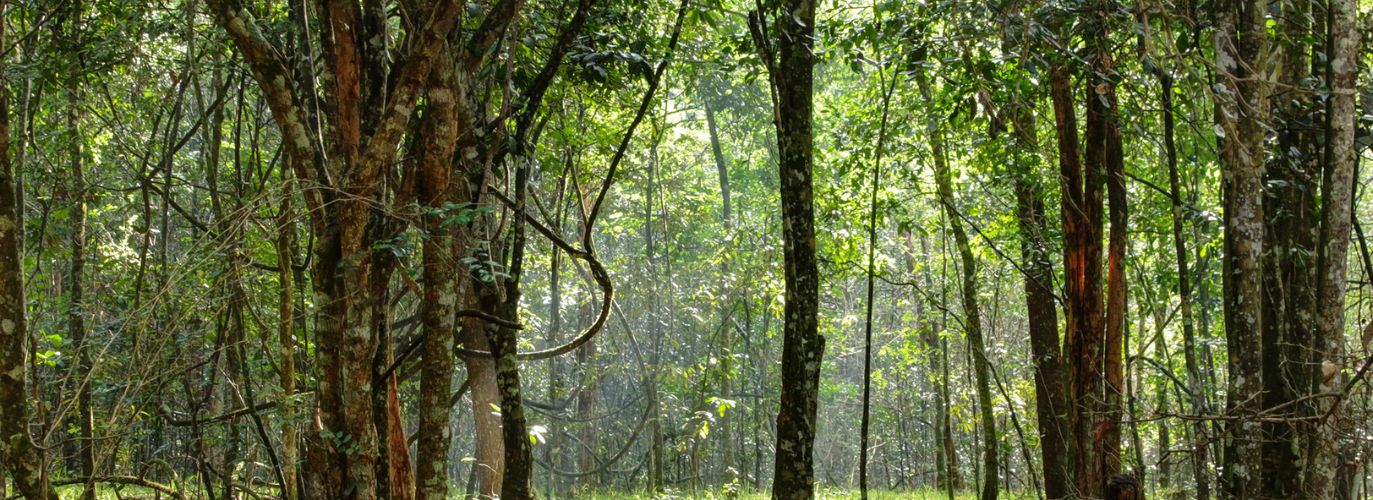Indigenous Tree Cover Up To 40%
When FKF started work in Karura Forest, the indigenous tree cover was 25%. The rest was degraded plantations of exotic species. Concerted efforts by FKF and KFS since 2009 have made significant progress in returning Karura to its natural upland forest state, with today near 40% of the forest replanted or naturally recovering, like this stand of Silver Oak (Brachylaena huillensis).
Nearly 20% of the joint FKF-KFS joint management plan goal to return Karura to its natural state has been achieved with some 150 ha (370 acres) having been cleared and either replanted or naturally enriched.
The aim is to reduce the dominance of exotic plantation species to return the ca 1,000ha forest to a natural state.
Experience over the past seven years has shown that forest restoration does not necessarily require every new tree to be planted by hand. Under the tangles of invasive Lantana shrubs and Mauritius Thorn creeper are a myriad of indigenous treelings just awaiting physical release and sunlight so they can shoot skyward like their parent trees that seeded them perhaps half a century ago.
All the clearing, planting and tree-care work has been supported by gate fees and membership subscriptions, as well as by the many generous private and corporate donors who have ‘adopted’ patches of forest and replanted thousands of trees. The physical work is carried out by women’s and youth groups from Huruma informal settlement on Karura’s northern boundary.





